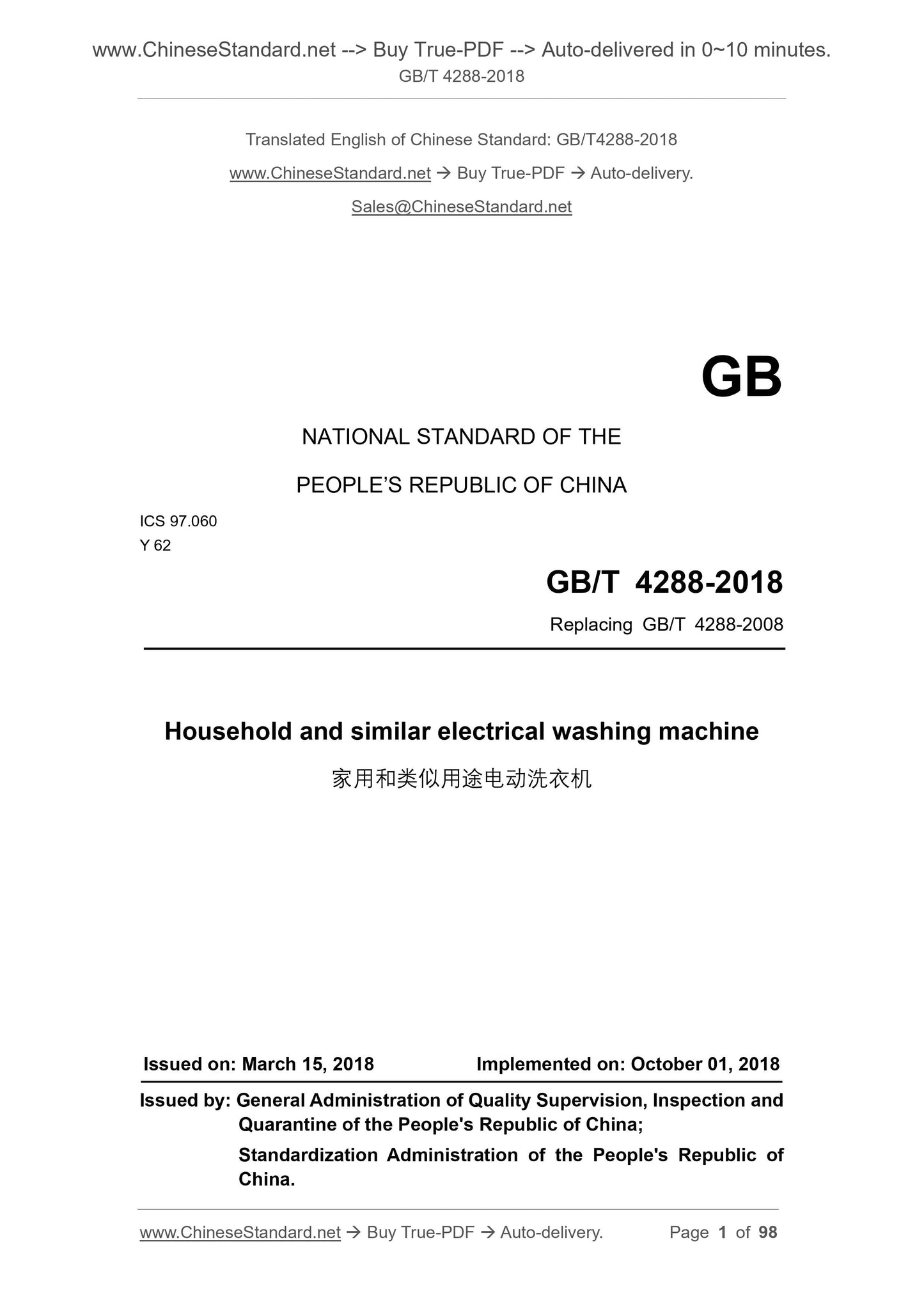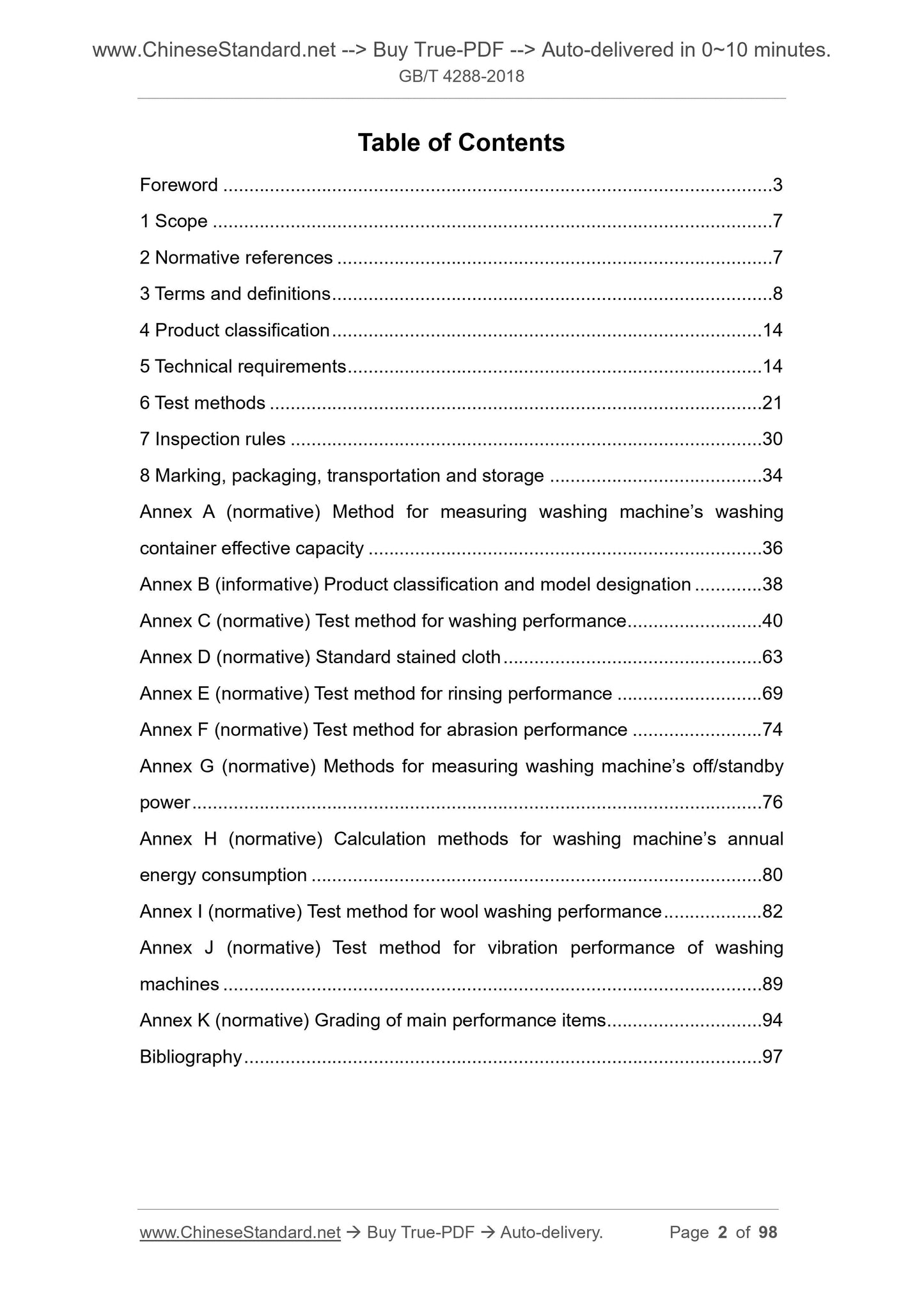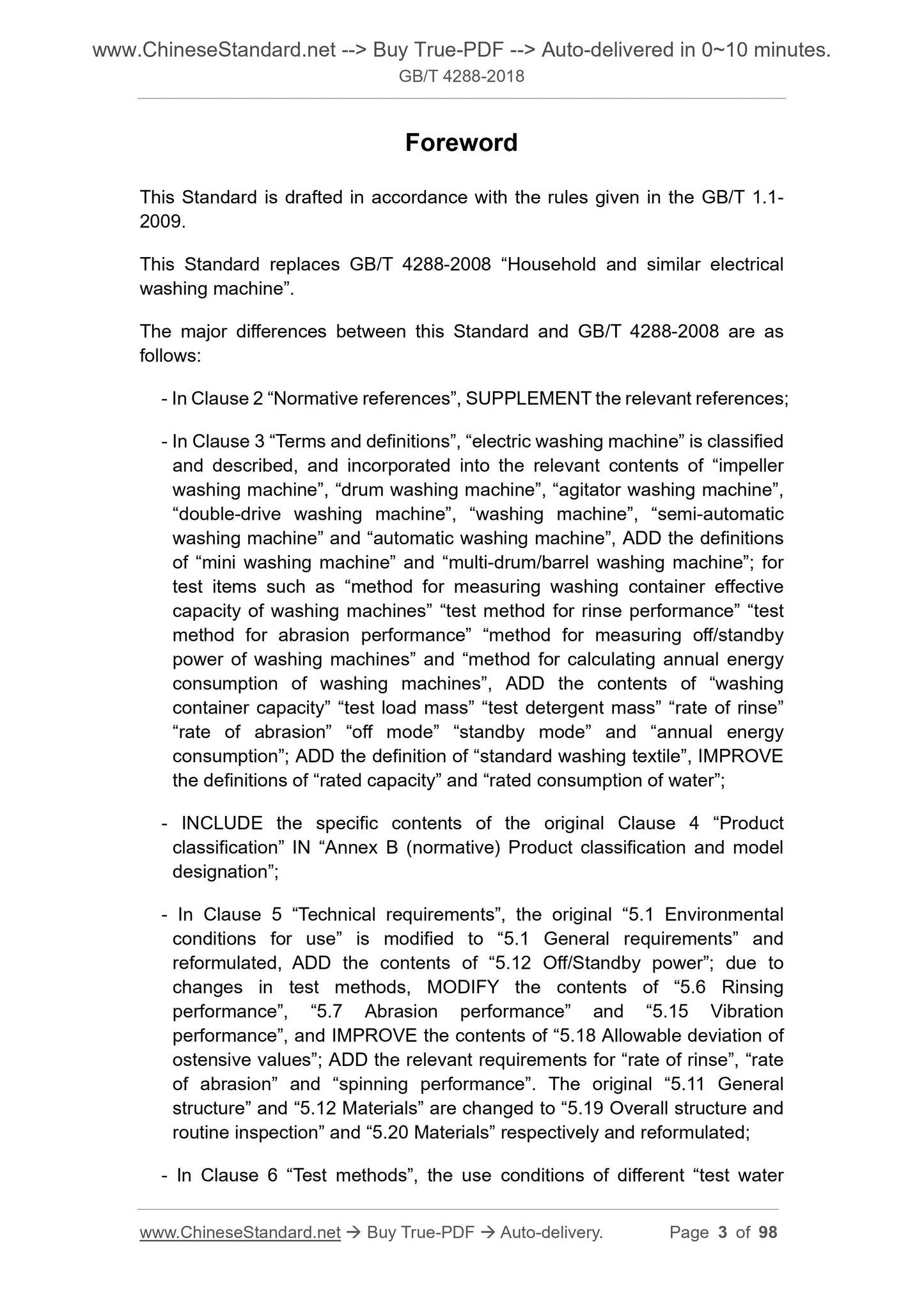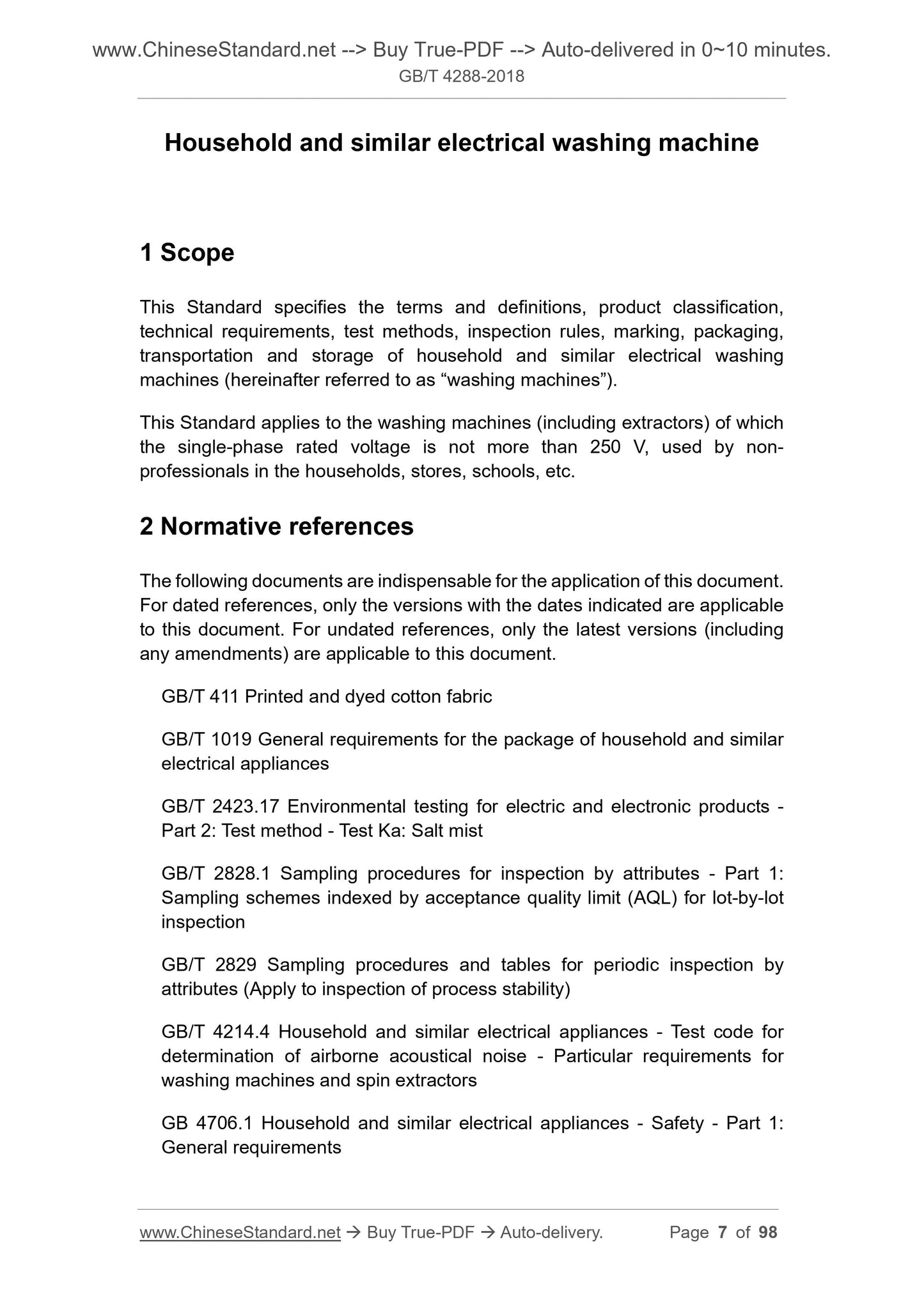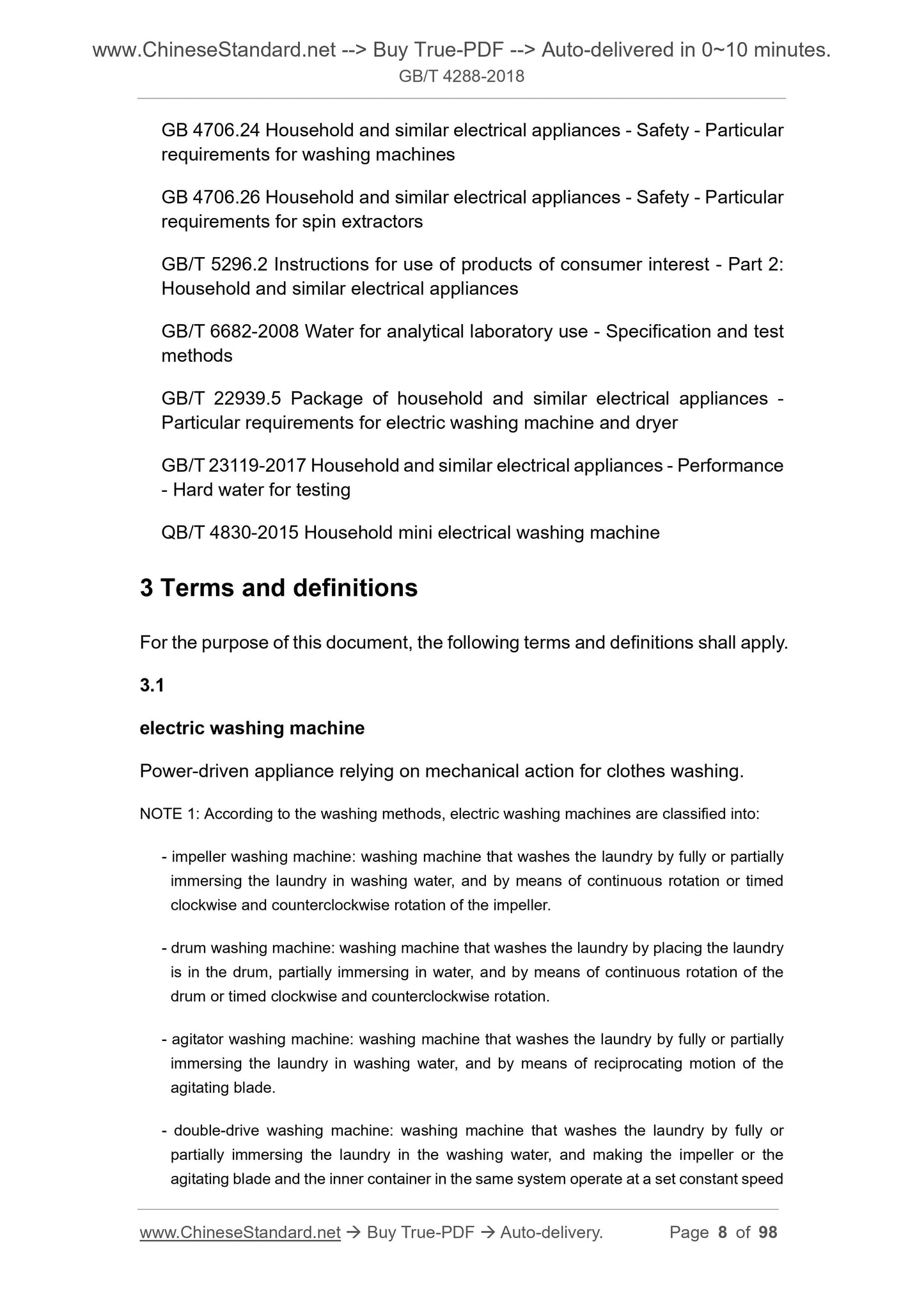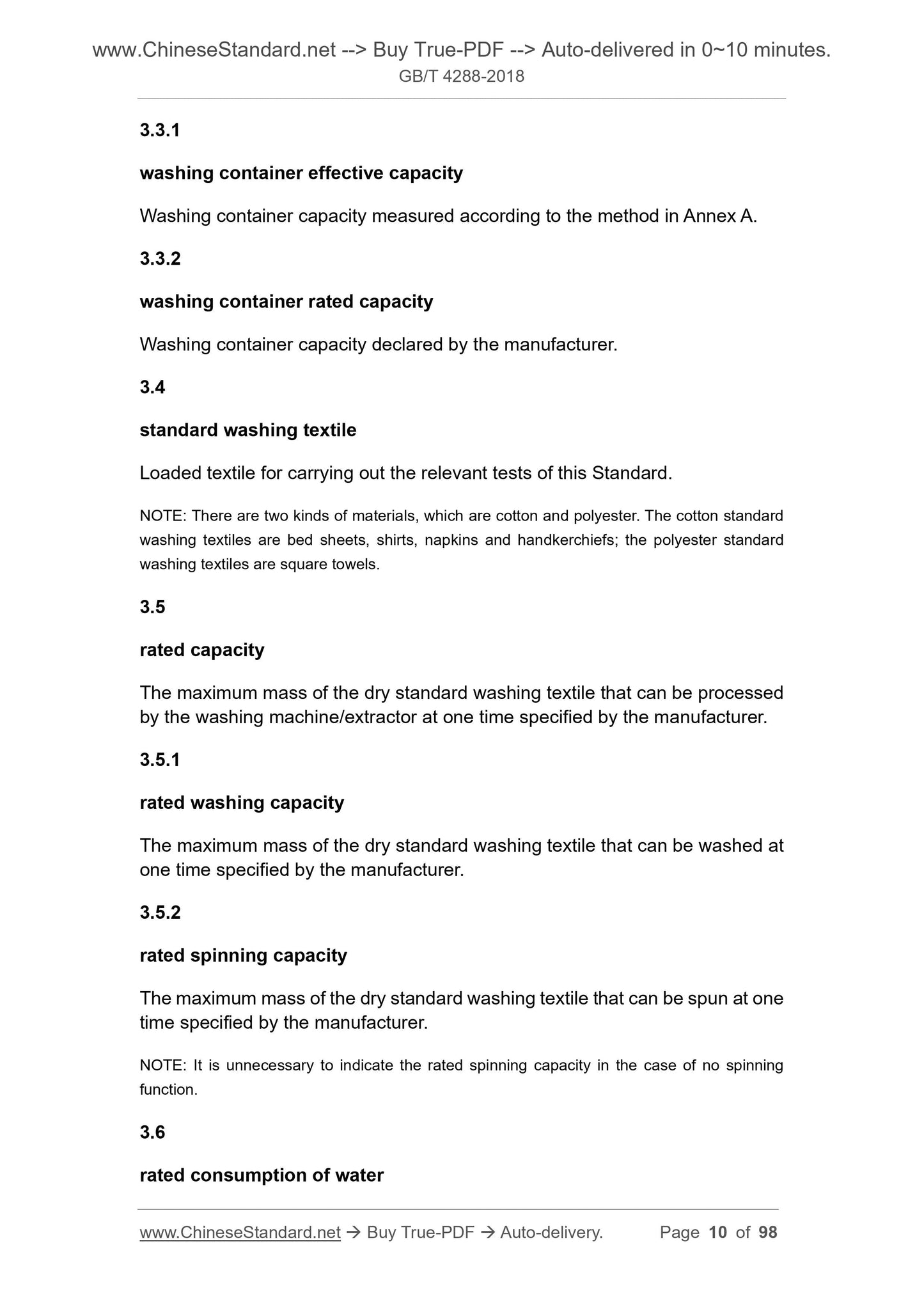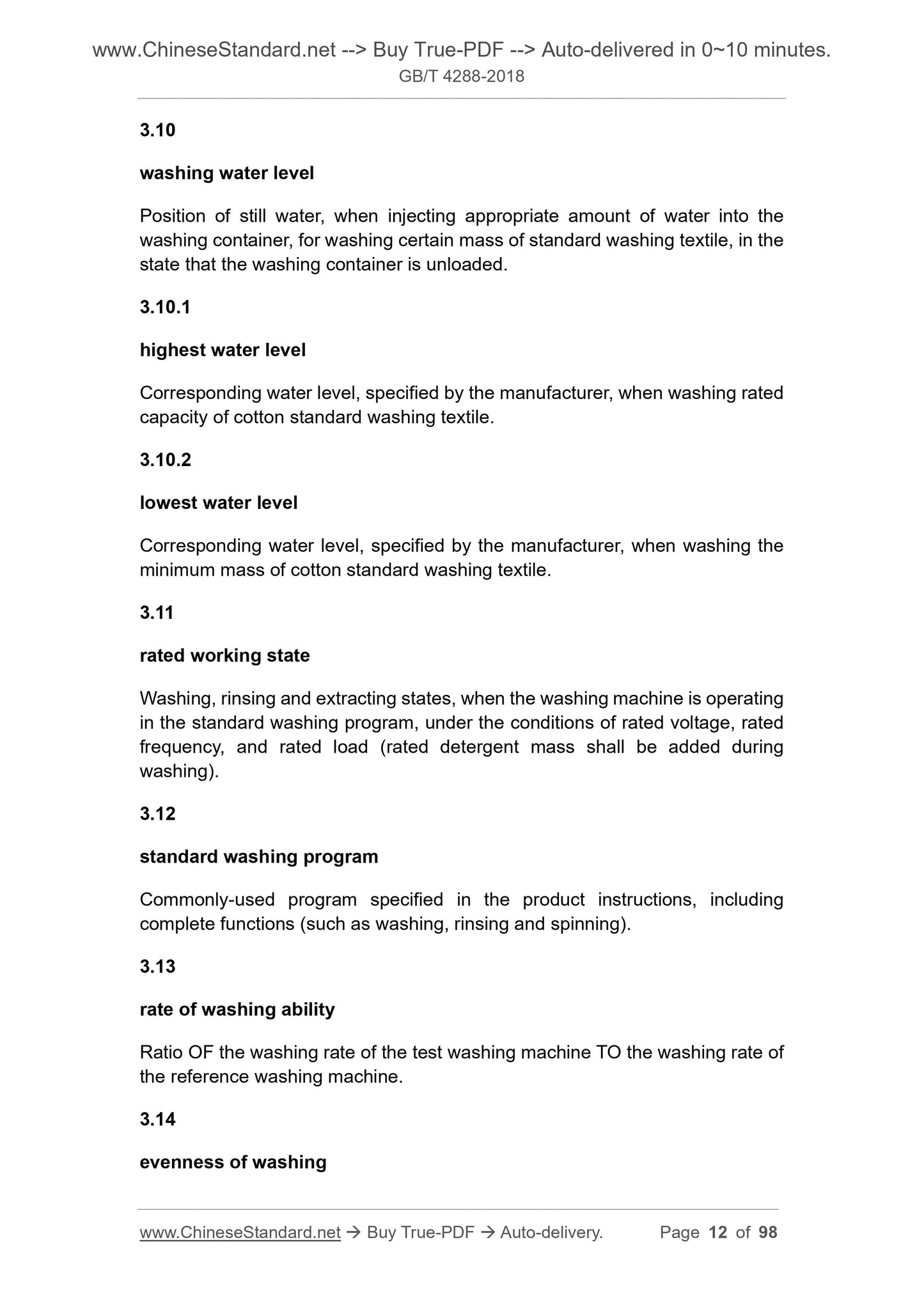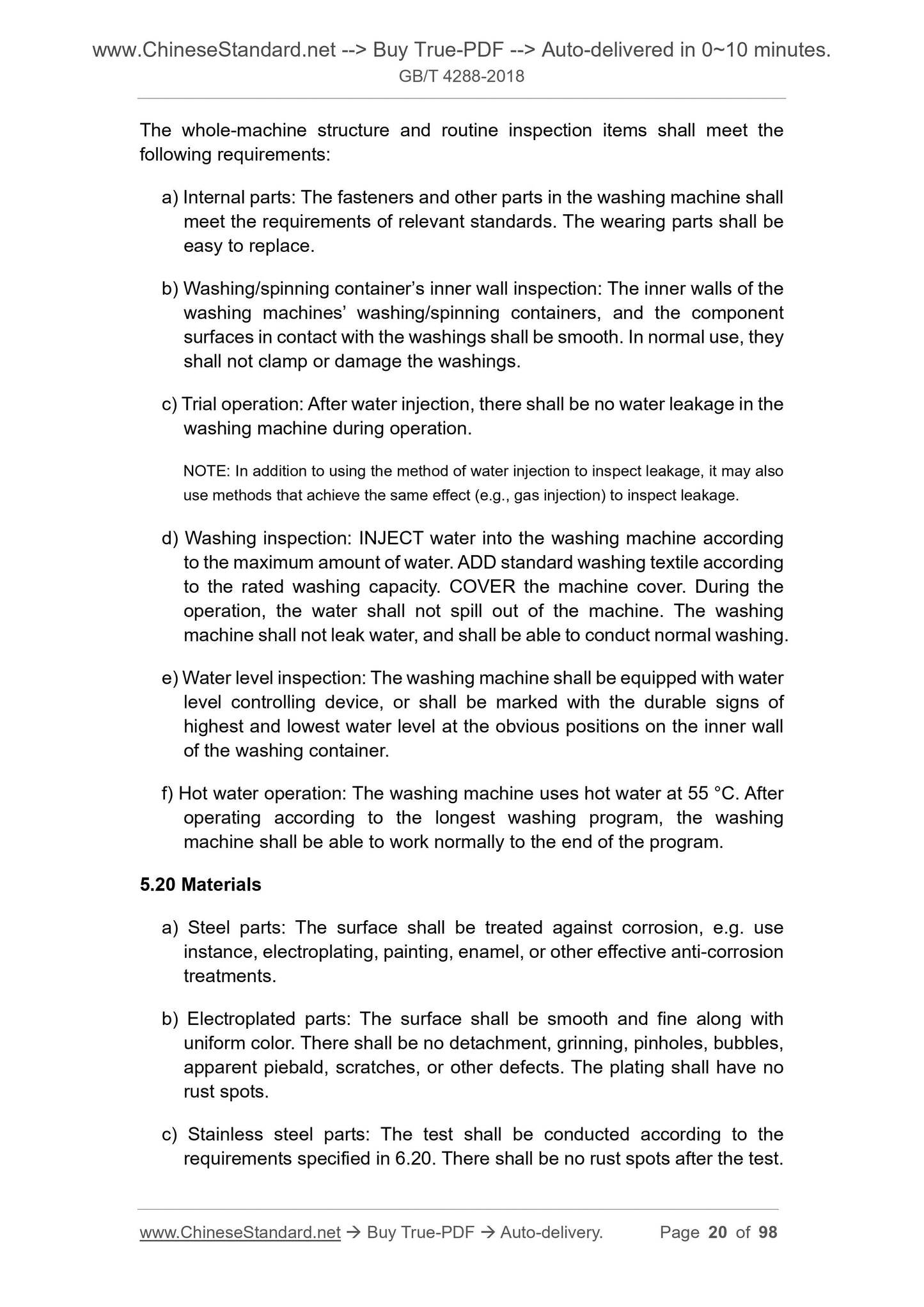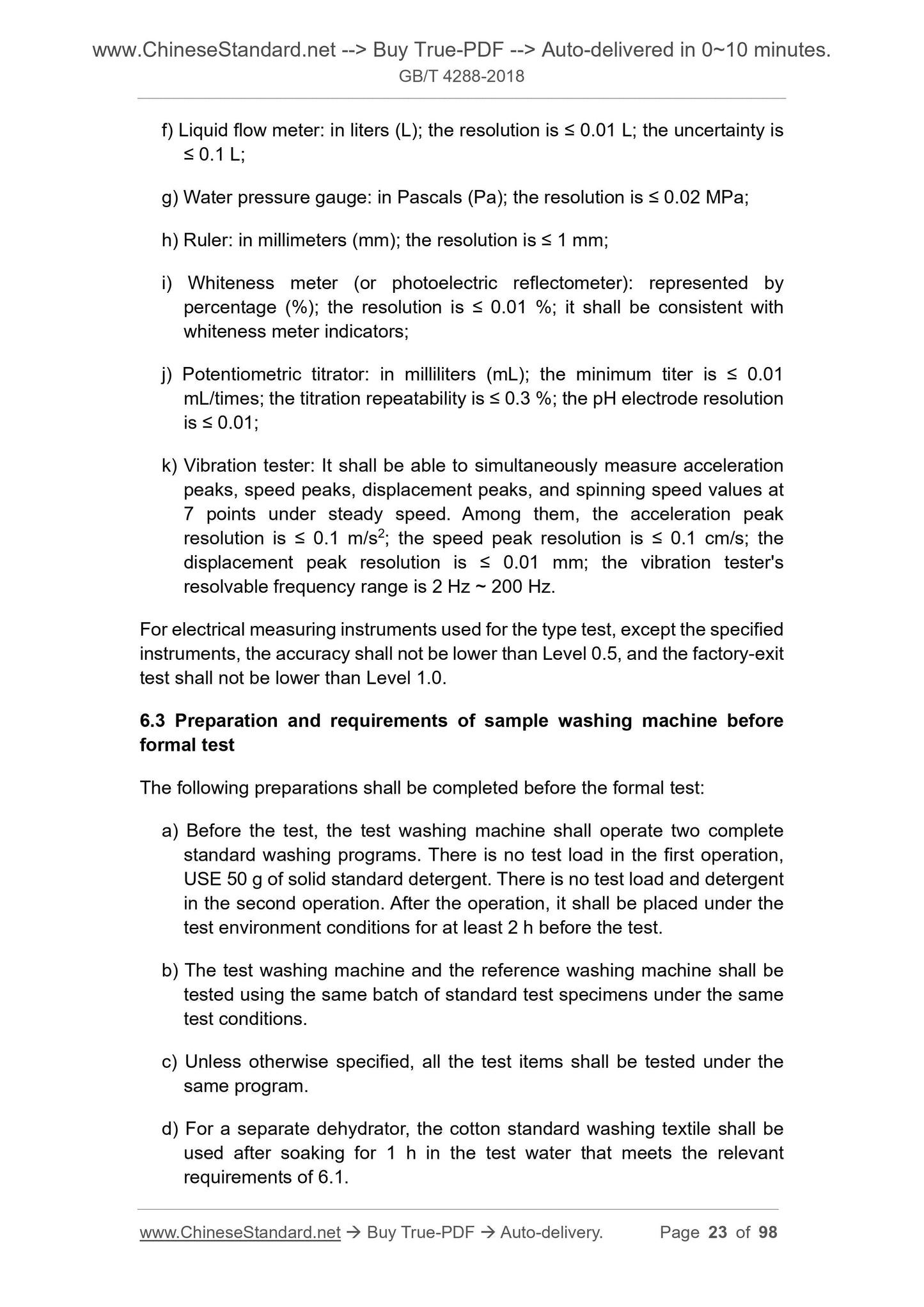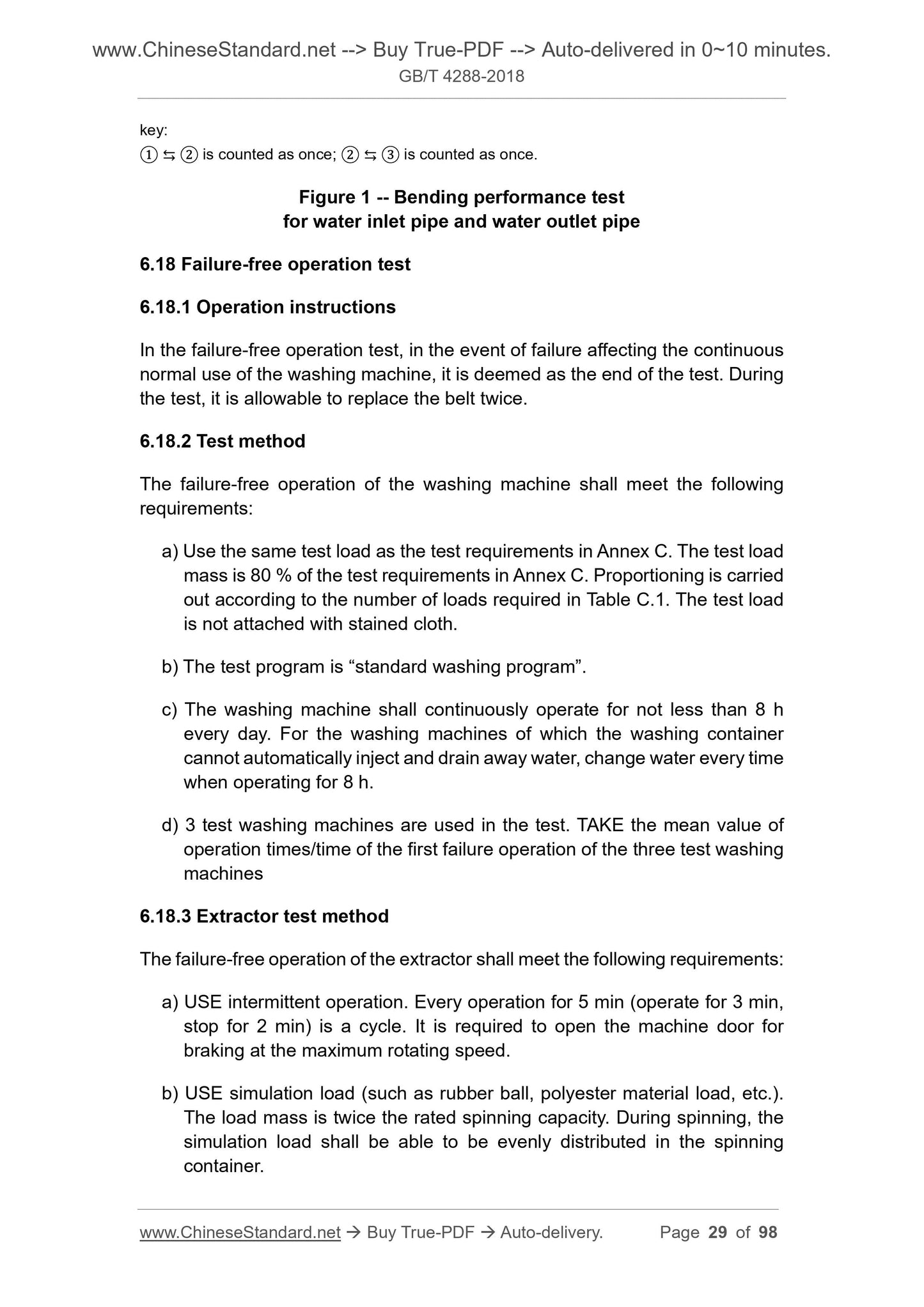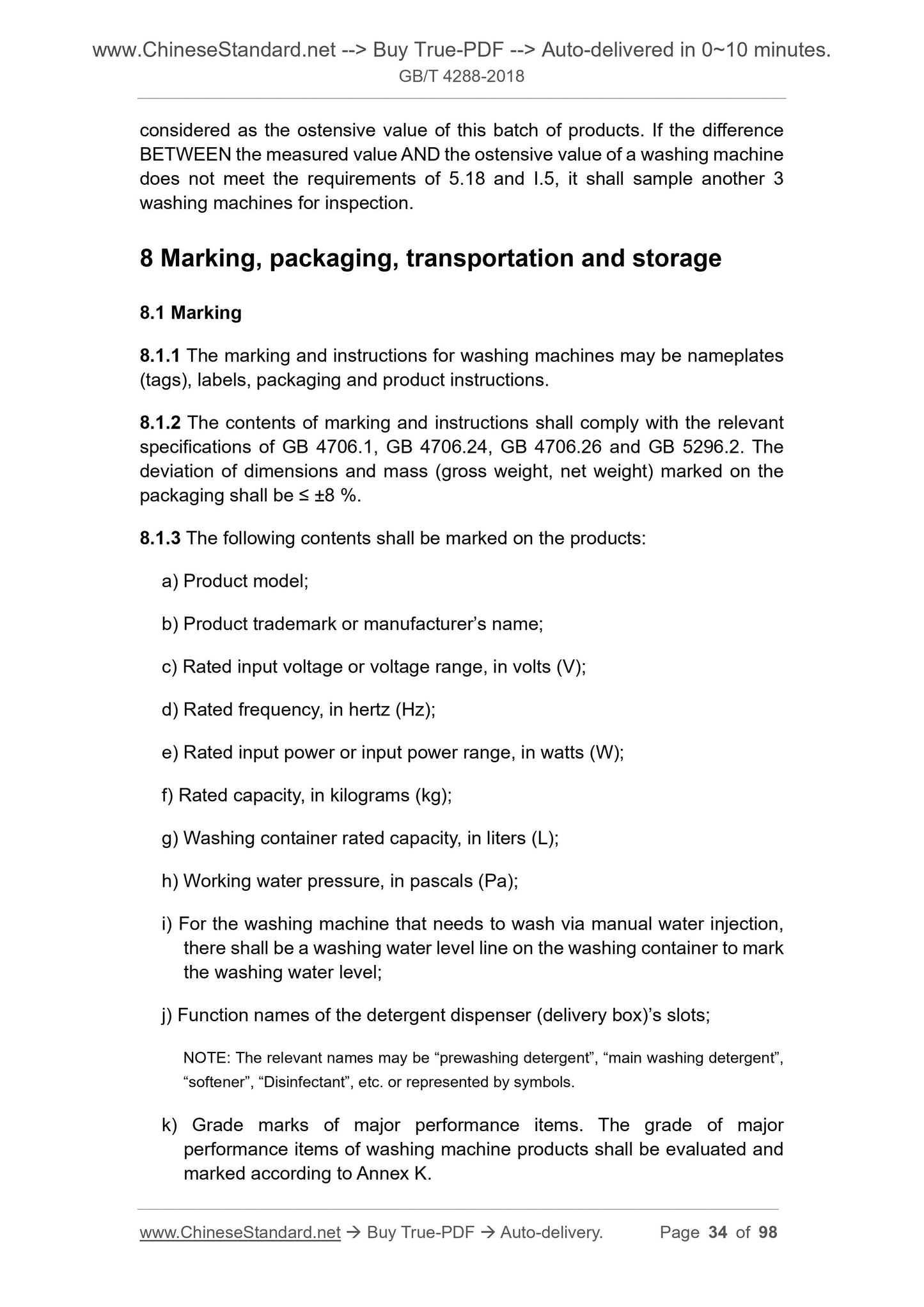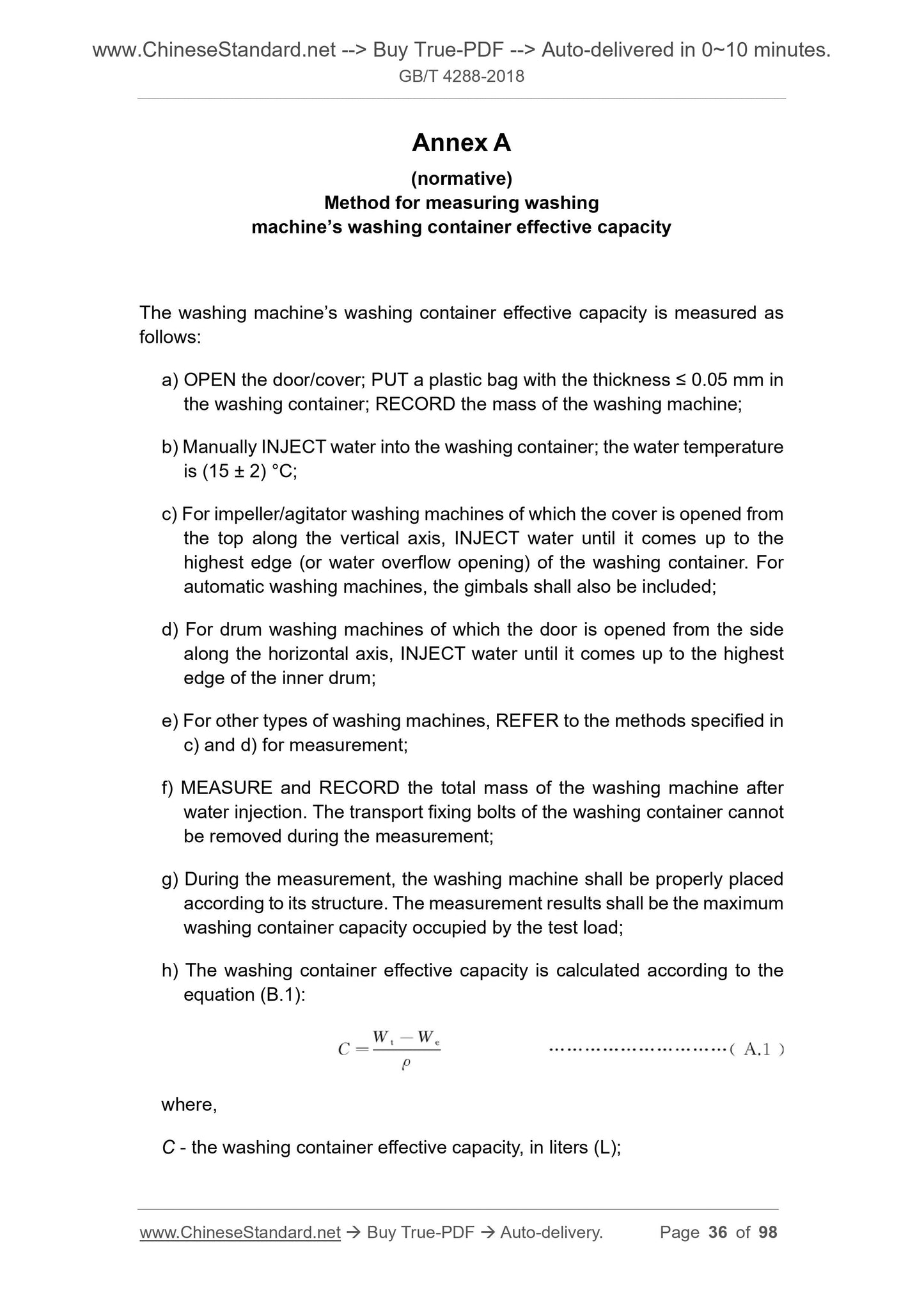1
/
of
12
www.ChineseStandard.us -- Field Test Asia Pte. Ltd.
GB/T 4288-2018 English PDF (GB/T4288-2018)
GB/T 4288-2018 English PDF (GB/T4288-2018)
Regular price
$405.00
Regular price
Sale price
$405.00
Unit price
/
per
Shipping calculated at checkout.
Couldn't load pickup availability
GB/T 4288-2018: Household and similar electrical washing machine
Delivery: 9 seconds. Download (and Email) true-PDF + Invoice.Get Quotation: Click GB/T 4288-2018 (Self-service in 1-minute)
Newer / historical versions: GB/T 4288-2018
Preview True-PDF
Scope
This Standard specifies the terms and definitions, product classification, technical requirements, test methods, inspection rules, marking, packaging, transportation and storage of household and similar electrical washing machines (hereinafter referred to as “washing machines”).This Standard applies to the washing machines (including extractors) of which the single-phase rated voltage is not more than 250 V, used by nonprofessionals in the households, stores, schools, etc.
Basic Data
| Standard ID | GB/T 4288-2018 (GB/T4288-2018) |
| Description (Translated English) | Household and similar electrical washing machine |
| Sector / Industry | National Standard (Recommended) |
| Classification of Chinese Standard | Y62 |
| Classification of International Standard | 97.060 |
| Word Count Estimation | 66,661 |
| Date of Issue | 2018-03-15 |
| Date of Implementation | 2018-10-01 |
| Issuing agency(ies) | State Administration for Market Regulation, China National Standardization Administration |
Share
